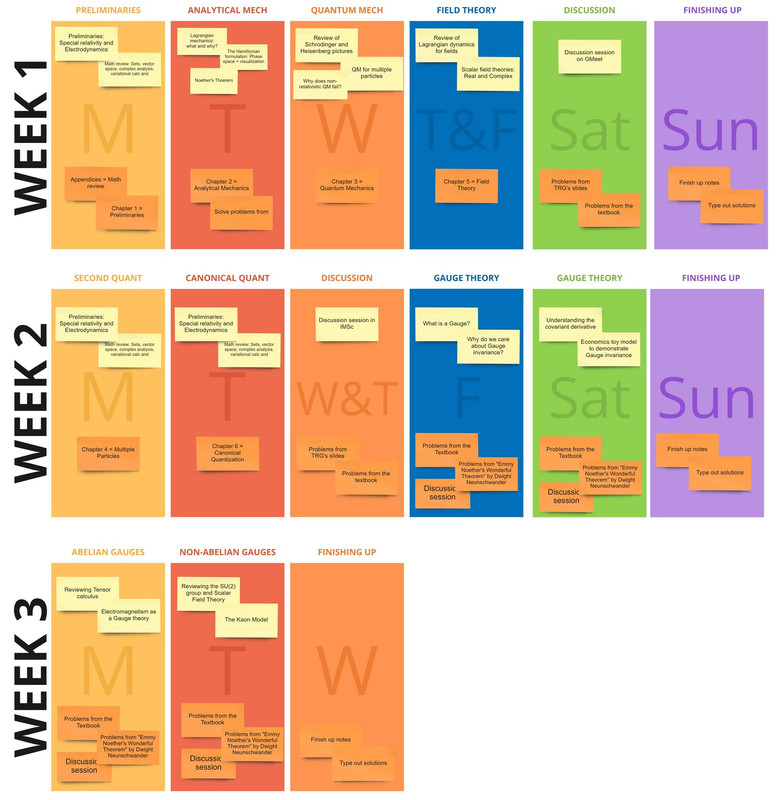- Introduction to random unitary circuits and the measurement-induced entanglement phase transition
- Quantum Entanglement Growth under Random Unitary Dynamics
- Measurement-driven entanglement transition in hybrid quantum circuits
- Measurement-induced quantum phases realized in a trapped-ion quantum computer
- Entanglement Transitions in Unitary Circuit Games
- Entanglement Transition in the Projective Transverse Field Ising Model
- Topological order and entanglement dynamics in the measurement-only XZZX quantum code
- Majorana Loop Models for Measurement-Only Quantum Circuits
We will start with chapter 1 of Jochen Rau on Jan 2022.
- "Notes on Statistical Mechanics" by Leonard Susskind
- "A Crash Course in Statistical Mechanics" by Noah Miller
Books, Notes and Lectures
- What is the necessity for fields?
- How do we go about constructing conservation laws for discrete transformations?
- Are transformations of the field itself physically meaningful?
- Apart from lie groups, are there any set of other groups that prove more useful in QFT?
- Why do only think of one parameter Lie groups in the context of Noether's theorem?
Chapters 1, 5, 6 and 7 ##More Resources for Analytical Mechanics
- Perimeter Institute's summer course on Noether's Theorem
- Chapter 1, "Mathematics for Physics" by Michael Stone & Paul M. Goldbart
- "Emmy Noether's Wonderful Theorem" by Dwight Neueunschwander
- "Classical Mechanics" by Herebrt Goldstein, Charles P. Poole Jr.& John L. Safko
- "Visualizing inverse Noether's Theorem and Symplectic Geometry" by Noah Miller
- "Notes on Classical Mechanics" by David Tong
- Observables are Hermitian elements of the observable algebra
$\mathcal{A}$ - A
$\mathcal{C}$ -algebra is a set that is closed under addition, multiplication and multiplication by scalars$k \in \mathbb{C}$ - Each element
$A \in \mathcal{A}$ has an adjoint$A^{\dagger}$ - An element
$E \in \mathcal{A}$ is positive if$\exists \ A \in \mathcal{A}$ such that$E = A^{\dagger} A$ - For us
$\mathcal{A}$ will always be the set of all bounded operators on a Hilbert space$\mathcal{B}(\mathcal{H})$ - Measurements themselves are described by assigning to each outcome of the device an effect
$E \in \mathcal{A}$ , which satisfies$0 \leq E \leq \mathbb{I}$ - A state
$\omega$ on$\mathcal{A}$ is a positive normalized linear functional on$\mathcal{A}$ , that follows the rules:-
$\omega : \mathcal{A} \rightarrow \mathbb{C}$ , is a linear map $\omega(X^{\dagger}X) \geq 0$
-
$\omega(\mathbb{I}) = 1$
